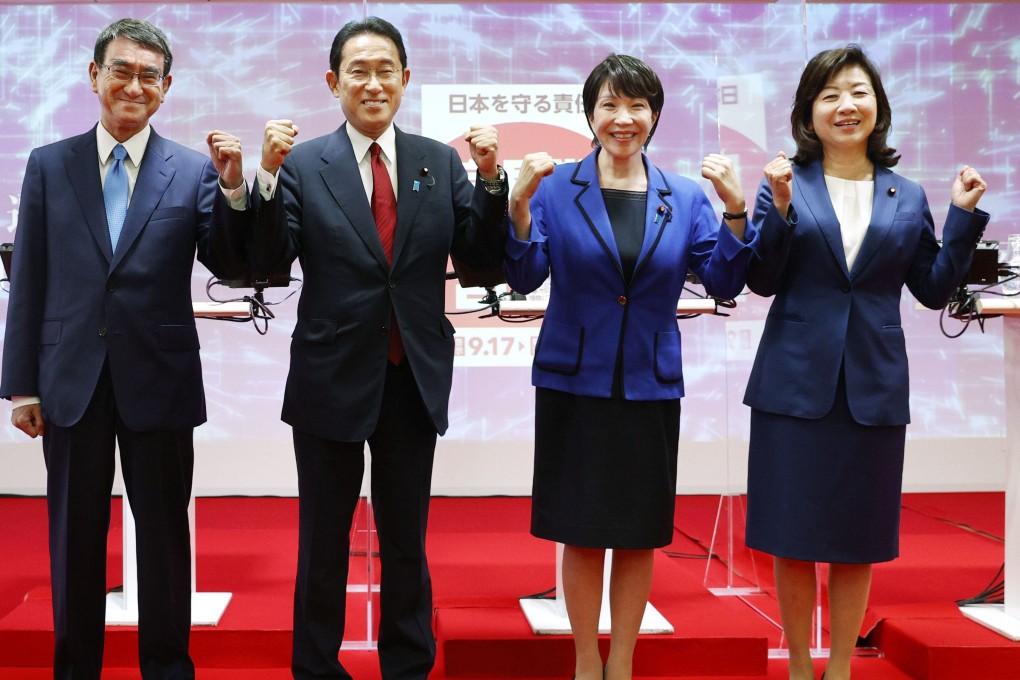Advertisement
As Japan’s ruling LDP picks a new leader, what’s next for the new PM?
- The winner of the Liberal Democratic Party leadership race is almost certain to replace Prime Minister Yoshihide Suga, who is not seeking a second term
- Taro Kono, Fumio Kishida, Sanae Takaichi and Seiko Noda are in the running. Here are the next steps before the expected general election in November
Reading Time:2 minutes
Why you can trust SCMP
0

Japan’s ruling Liberal Democratic Party (LDP) on Wednesday votes for a new leader, who will almost certainly become the next prime minister, after current premier Yoshihide Suga announced he would not seek a second term as party leader.
Running for the top post are popular vaccine minister Taro Kono, former foreign minister Fumio Kishida, former internal affairs minister Sanae Takaichi and Seiko Noda from the party’s dwindling liberal wing.
The winner of the LDP leadership race is expected to replace Suga as premier of Japan given the LDP’s majority in parliament’s powerful lower house.
They will have to deal with an economy battered by emergency curbs aimed at stopping the spread of coronavirus, which is only now starting to slow and strains on the medical system ease.
The new premier must call an election this year. How does the vote work?
There will be 764 votes up for grabs for the LDP leadership race, with the candidate who takes the majority set to become party president.
Advertisement